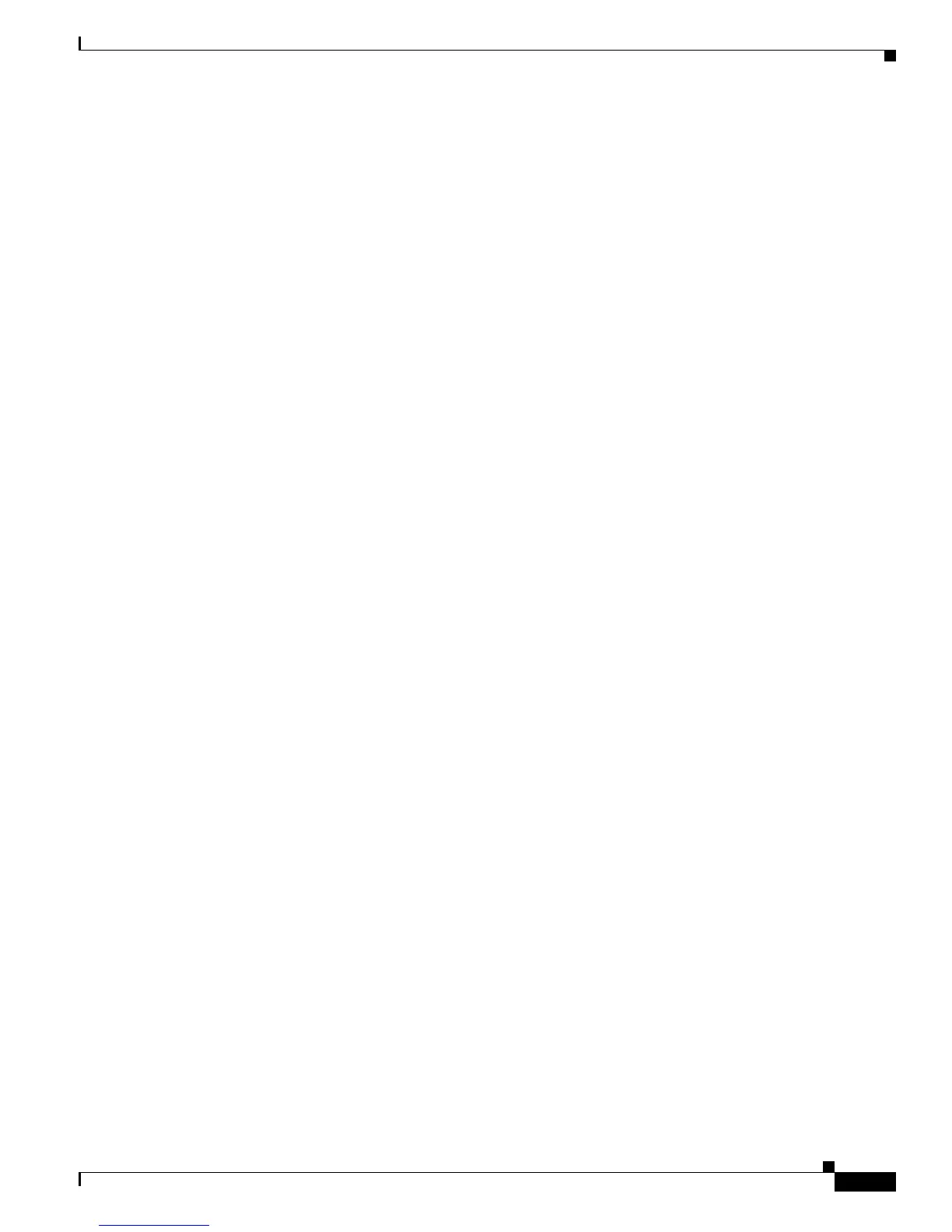13-247
Cisco IOS XR Troubleshooting Guide for the Cisco CRS-1 Router
OL-21483-02
Chapter 13 Troubleshooting Load Balancing
Configuration Examples for Troubleshooting Load Balancing
Checking the IGP Routing Table and CEF Database
This section shows how to verify that Router B uses Bundle-Ether12 to reach Router A's loopback
interface, 10.1.2.1. Use the show route command to view the current path to RouterA:
RP/0/RP0/CPU0:RouterB# show route 10.1.2.1
Fri Oct 24 02:23:48.643 PST DST
Routing entry for 10.1.2.1/32
Known via "ospf 200", distance 110, metric 2, type intra area
Installed Oct 22 02:47:06.383 for 1d23h
Routing Descriptor Blocks
10.12.48.2, from 10.1.2.1, via Bundle-Ether12
Route metric is 2
No advertising protos.
This shows that Router B selected Bundle-Ether12 as the single path to 10.1.2.1. Use the show cef
command to view the corresponding CEF path:
RP/0/RP0/CPU0:RouterB# show cef ipv4 10.1.2.1
Fri Oct 24 02:25:13.453 PST DST
10.1.2.1/32, version 0, internal 0x40040001 (0xa93159cc) [1], 0x0 (0xa909b448),
Updated Oct 22 02:47:06.391
Prefix Len 32, traffic index 0, precedence routine (0)
via 10.12.48.2, Bundle-Ether12, 2 dependencies, weight 0, class 0
next hop 10.12.48.2
local adjacency
local label 16028 labels imposed {None}
This verifies that CEF also uses Bundle-Ether12 as the egress interface for traffic forwarded to 10.1.2.1.
No Layer 3 or Layer 4 load balancing can occur in this configuration because there is only one link.
Layer 2 load balancing can occur however, because the single link is a bundle of three separate
interfaces.
Verifying Bundle Load Balancing
Cisco IOS XR software has a bundle utility that predicts how load balancing will distribute flows among
the bundle links. This is an interactive utility that prompts for the information that the load balancing
algorithm uses to assign flows to links. For more information, see Cisco IOS XR Interface and Hardware
Component Command Reference.
This example shows how to use the bundle hash utility to determine the link that a specific Layer 4 flow
would take, and the links that other flows in the subnet would take:
RP/0/RP0/CPU0:RouterB# bundle-hash bundle-ether 12
Fri Oct 24 07:03:09.163 PST DST
Specify load-balance configuration (L3/3-tuple or L4/7-tuple) (L3,L4): L4
Single SA:SP/DA:SP pair (IPv4,IPv6) or range (IPv4 only): S/R [S]: s
Enter bundle type IP V4 (1) or IP V6 (2): 1
Enter source IP V4 address: 192.168.254.1
Enter destination IP V4 address: 10.1.2.1
Ingress interface --
- physical interface format: [ POS | GigabitEthernet | TenGigE ]R/S/I/P
- bundle interface format: [ Bundle-Ether | Bundle-POS ]bundle-id
Enter ingress interface: GigabitEthernet0/6/5/4

